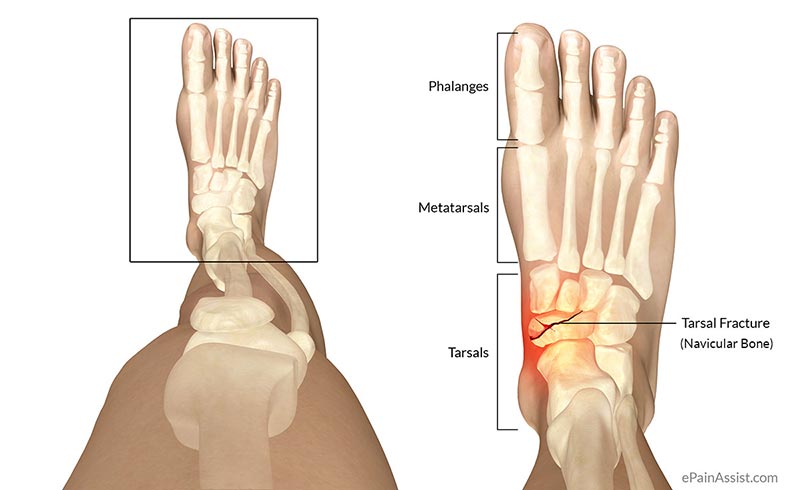There are seven tarsal bones present in foot and ankle. These bones are the calcaneus, talus, cuboid, navicular, medial cuneiform, intermediate and lateral cuneiform. Tarsal fractures, although rare, occur due to unexpected force or impact to the foot. Sustained force can result in a stress or hairline fracture. The navicular and the calcaneus bones more commonly suffer from stress fracture.
Signs and Symptoms of Tarsal Fracture
- Abrupt pain after force or impact to the foot.
- Difficulty in weight bearing.
- Worsening pain upon activity or weight bearing.
- Loss of function of the foot.
- Tenderness is present.
- Swelling is present.
- Deformity may also be present.
Treatment of a Tarsal Fracture
- X-ray can be done to confirm the fracture.
- Adequate rest is required.
- A cast is applied for 6 weeks for the severe fractures. This helps in giving support and immobilization to the foot.
- A walking boot or crutches will usually suffice in stress fractures. They help in taking off the load from the fractured foot.
- NSAIDs or other pain killers can help with the pain relief.
- If the fracture is not healing, then a surgical procedure may be needed consisting of internal fixation.
- After complete healing of fracture, the individual needs to begin a comprehensive rehab program consisting of stretching and strengthening exercises for mobility, flexibility, and range of motion.

